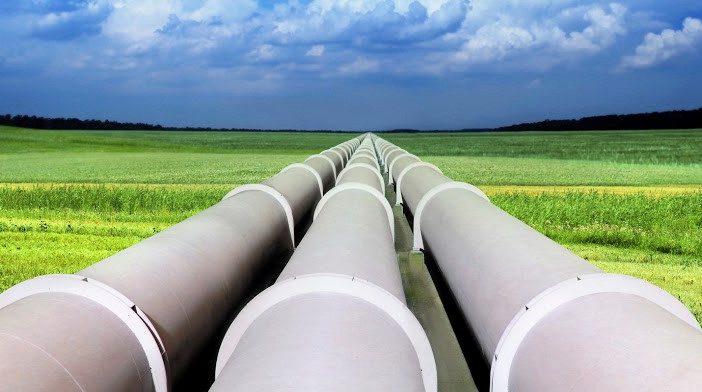- Eskom’s acting CEO, Collins Matjila, said they already had plans in place to exploit gas reserves off the east coast of Mozambique as early as next year.
- Matjila said turning to gas would be a game changer for a utility that has been under pressure to supply electricity to the country’s commercial and residential customers due to an ageing power grid.
“We are looking at exploiting gas reserves for use as a fuel input into our power [grid]in three stages, the first one – which is short term – we have got an opportunity that we are working on that would give us an equivalent of 600 Megawatts.
“That will happen in 18 months, but we will be able to secure that 600 MW from Mozambique,” he said.
Related news: South Africa issues RFP for 2000MW Risk Mitigation New Generation Capacity
He said the second phase would take Eskom about 18 to 24 months, and will see the utility piping gas to South Africa that will avail an equivalent of 5 000 Megawatts of power from Maputo through the Rovuma gas fields.
Matjila also said that Eskom was already in talks with the electricity utility from Mozambique to make this happen.
“There is a third stage in our gas strategy, but it includes the exploitation of gas reserves inside the country, shale gas in the Western Cape, and the coalbed methane gas in Mpumalanga, both of them which are fairly longer term.
“But we will be looking into those and partnering with our own government to see how we can jointly exploit that for long term supply,” he said.
Related news: South Africa commits to exploit Mozambique’s booming gas market
Eskom is one of the biggest utilities in the world with over 43 000 megawatts of installed generating capacity.
Matjila said while its initial partnership is with the Mozambican electricity utility, Eskom will be talking to JSE-listed Sasol as part of a plan to use the existing Sasol pipeline to get an equivalent 600 Megawatts gas into South Africa.
“That is over and above using liquid natural gas, which we can transport in ornaments. Sasol is an important partner, but we will also be engaging [with other partners],” he said.
shortly after Eskom briefed Parliament’s Portfolio Committees on Public Enterprises and Energy on the state of the national power grid.
Matjila made these revelations at shortly after Eskom briefed Parliament’s Portfolio Committees on Public Enterprises and Energy on the state of the national power grid at the end of July 2020.
Author: Bryan Groenendaal
Source: SAnews.gov.za












1 Comment
Don’t hold your breath.
Eskom has had its first opportunity to get cheap gas from Mozambique, at 20-25% of the $10-12/GJ cost of imported LNG, as far back as 1994. At the time, Eskom was offered enough gas to supplement the peaking power for the country by up to 2500 MW with delivered gas costing $2,00 – $2.20 per GJ. The supplementary power could have cost the utility USD 8-10c/kWh, or even less if used for corner-firing the big coal-fired units to produce at 110% for peak load shaving.
Eskom’s then head of generation, Bruce Crookes, dismissively offered the Mozambican gas utility one-tenth as much ($0.20/GJ), being “the cost of their cheapest coal at the pit-head”. At that pipeline scale, this offer was about 1/8th the cost of delivery of the gas. It went no further as Eskom was simply not prepared to negotiate in good faith. They were later forced to use diesel fuel instead, for peaking power, at the time of rolling blackouts throughout SA. Diesel in Cape Town and Mossel Bay was procured at a cost nearly 20 times higher than Mozambican gas, as diesel prices surged. The peaking power facilities in the Cape, then running virtually at >80% load factor, amounted to 20% less than the 2,500 MW of the potential gas-supplemented peaking capacity.
Sasol eventually, in 2000, secured rights to transport the same gas to South Africa from the Pande/Temane fields, much closer to South Africa’s grid, where it was demanding a price for the gas of over R36/GJ from IPPs. Eskom stayed on the sidelines.
South Africa’s power prices and weak rand leave the country in a far worse position now, with the coal fleet in further disarray. A short term dip in LNG cargo pricing does not offer any panacea as the gas-fired power plants will re-assert themselves at prices that will see simple-cycle gas-fired power costing above the high-end Eskom peaking tariffs, currently around R4.00/kWh.
With the Rovuma gas field over 2500 km from South Africa’s demand centre, compared to 900 km for the Temane field, pipeline gas tariffs are likely to exceed LNG prices and will require 20 year commitments to secure line capacity. One should not expect tariffs below $25c/kWh for base-load CCGT gas power and closer to USD 40c/kWh for simple-cycle peaking power. It’s a far cry from what was once available.
No early-bird discounts any more. As I said, don’t hold your breath.